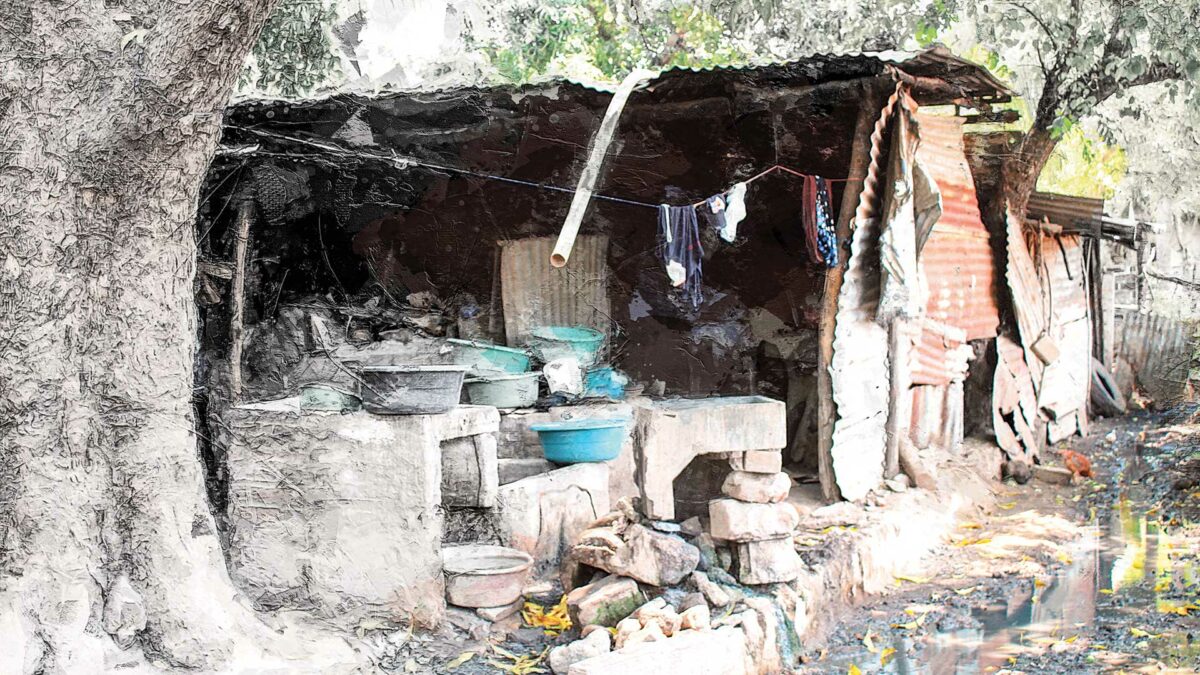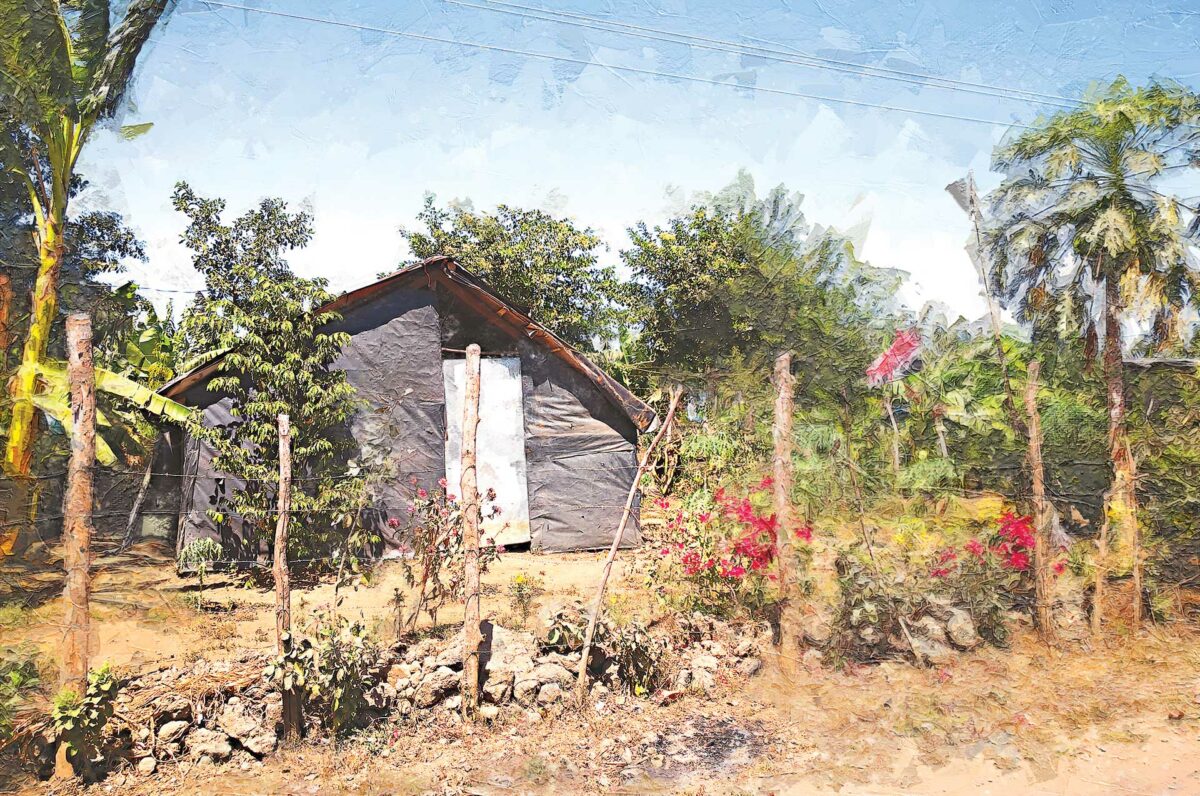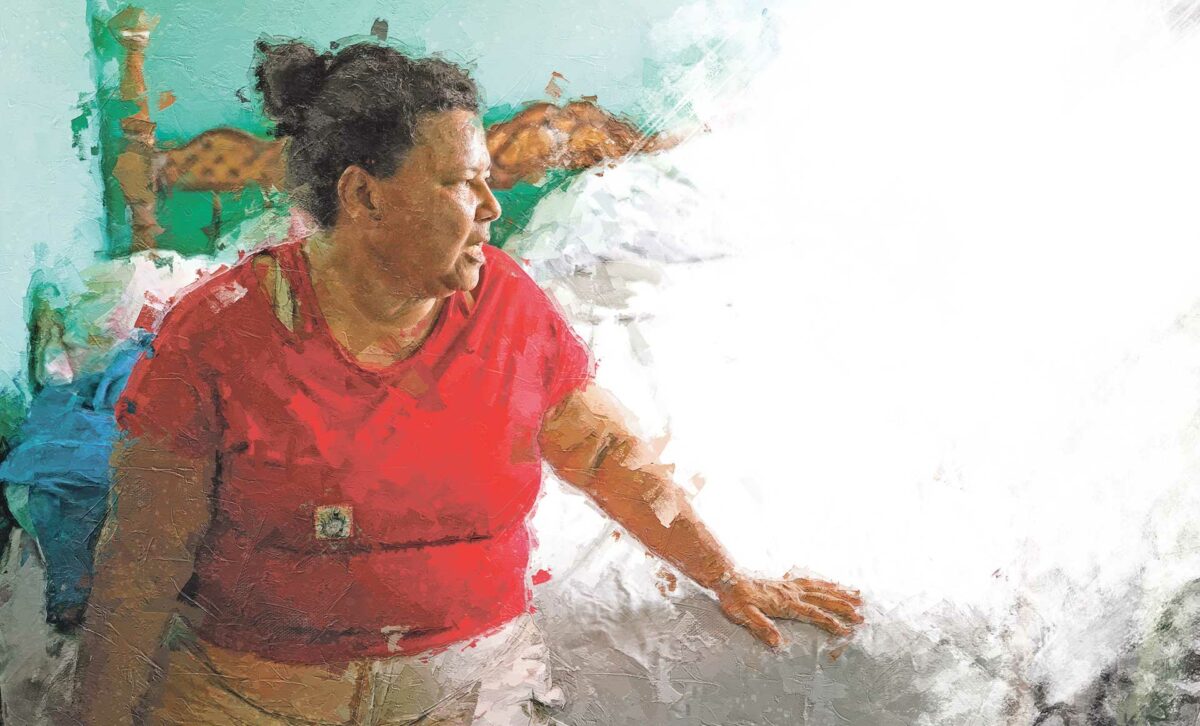Chronic Kidney Disease has a mortality rate of 54% in Guatemala. Among the departments with more reported cases is Escuintla; here, 61% of the sugarcane cultivation area is located. On this coast of the Pacific Ocean, many communities are neighbors of large areas of crops. Farmers and their families live among sheets, plastics, environmental contamination, and high temperatures, without access to quality water and with progressive disease. One of them is Sonia, a kidney patient who must have her dialysis done in a makeshift room that is no more than a square meter.
- #IntoxicatedCommunities
- #10MesesSinFODES
- #8M
- #AcusadosPorEstevez
- #AeropuertoDelPacífico
- #ConoceTusDerechos
- #ElGéneroEsPolítica
- #MagisterioEnCrisis
- #MenosAgroMenosComida
- #SinDerechoAVivienda
- Anticonceptivos que esconden abusos
- Cronología #AcusadosPorEstevez
- Diez años de abusos
- Estadisticas #Desprotegidos
- Histórico de Cultivos #MenosAgroMenosComida
- Institucionalizados #Desprotegidos
- La Tierra Herida
- Perfiles #AcusadosPorEstevez
- Reintegros #Desprotegidos
- Ubicaciones #AcusadosPorEstevez
- Videos #Desprotegidos
- Diez años de abusos
- Especial desaparecidos
- La República de las Masacres
#IntoxicatedCommunities
-
 English (US)
English (US)
-
 Español
Español
Chronic kidney disease due to non-traditional causes – occurs without previous diabetes or hypertension – has landed in the communities of the Central American corridor of the Pacific Ocean. These are five countries where public health institutions have realized a constant prevalence of cases. This epidemic also has social characteristics: affects agricultural workers and their families. And here are included environmental factors, education, access to basic services and use of agrochemicals. This is an approach to how those affected people live and what resources they have to cope with the physical, emotional, social and economic scenario that the disease imposes.
Patients with chronic kidney disease are amongst the most vulnerable sectors of the population and research shows more vulnerable to contracting the worst effects of COVID-19. In Jiquilisco, a coastal municipality of Usulután, El Salvador, the two diseases have merged in its deadly dance within a population that is also battling chronic and multidimensional poverty. The mandatory quarantine – called lockdown in other parts of the world – left this part of the population without the possibility of generating income and confined to houses not fit for allowing isolation.
Chichigalpa is a municipality of Chinandega, Nicaragua. Here it is impossible to separate the residency areas from the agricultural ones. The houses grew among the crops of –mainly- sugar cane. The dilemma is that what is good for agricultural production it does not equally beneficial for the residents. Sugar industry workers were the first to be detected with Chronic Kidney Disease.
At least 90% of people diagnosed with Chronic Kidney Disease in Costa Rica are dialyzed at home. The goal of the entire healthcare system is to ensure that hospitals are not saturated with people who must undergo scrubbing treatment for several hours a day, and three to four times a week. This forces the construction or adaptation of a sterile room. The measure involves a significant expense for families who already live on the poverty line and who, in addition, this disease leaves without income, since the mills, endorsed by the government, test for kidney damage before hiring people. If they find altered results, they don’t use them. The cases are concentrated in one of the provinces with the most agricultural weight: Guanacaste.
The Central American Pacific coast is plagued by communities where people live marked by chronic kidney disease. To this diagnosis numerous studies have added nontraditional. It means that it is not preceded by other basic diseases and also appears at an earlier age. Those affected agree to work in agricultural activities and reside as neighbors of massive crops. This is the first chapter of a series that will address the phenomenon. This is about Honduras.




